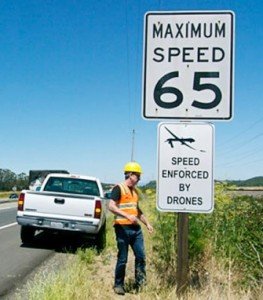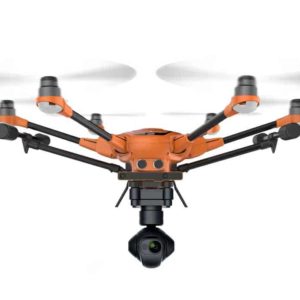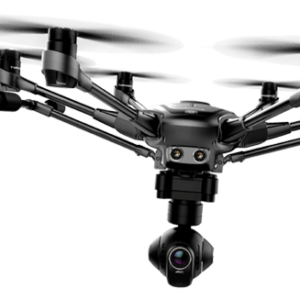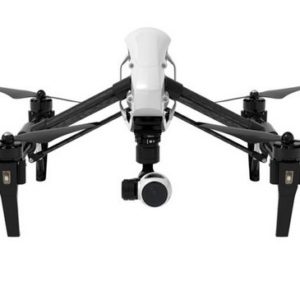The 7 Best Police Surveillance Drones For Law Enforcement
These are the most popular camera drones and UAVs used for traffic monitoring and law enforcement applications in the USA.
Applications of Police Drones in Law Enforcement

Police departments across the country use drones for a wide range of uses, from everyday situations like traffic management to novel applications such as crime scene analysis.
Below are the most common applications of police drones in law enforcement.
1. Aerial Surveillance
With a quiet drone that can fly and hover high out of sight, police can carry out aerial surveillance with ease.
Modern drones have high-resolution cameras that can capture images and video from afar. And with a zoom-capable camera drone like the DJI Mavic 2 Zoom, police officers don’t need to get dangerously close. For instance, the DJI Zenmuse Z30 camera offers up to 180X zoom (30X optical, 6X digital).
The best part about drones is that they can reach areas police officers cannot or too dangerous for them.
For surveillance of moving persons or objects, many drones can track a target autonomously.
Drone surveillance by law enforcement raises many legal and privacy issues. For instance, can police launch drone surveillance without a warranty?
Several states,s including Texas, Florida, and Idaho, have already passed laws restricting how police can use drones.
2. Search and Rescue
While there are many concerns about police watching people from above, it’s inarguable that drones have become invaluable in search and rescue.
Drones have replaced helicopters to provide fast, cheap, and safe search and rescue, especially in challenging terrains.
Drones can cover a large area in a short time, fly through tight spaces with trees or buildings, and provide a live feed to teams on the ground.
Premium drones that accept custom payloads can be outfitted with special tools such as a thermal camera, a searchlight, or a loudspeaker to improve search effectiveness.
And this is just the beginning. Soon, search and rescue drones will not only carry out the ‘search’ part but also carry out a rescue. Companies are already creating drones with the ability to lift a person.
3. Traffic Management
Because of their prominent aerial view, drones are an obvious tool for traffic management. Police officers can deploy drones to monitor traffic congestions and quickly determine possible causes and solutions.
Some police departments are also using drones to reconstruct traffic collisions. Instead of painstakingly piecing together ground photos, they use a drone to map the scene from above, making it easier and faster to investigate accidents.
4. Crime Scene Analysis
Similar to mapping and imaging a traffic accident, drones also provide investigators with a bird’s eye view of a crime scene. This can bring out details and perspectives they would have missed.
Forensic investigators can also use drones to map a crime scene to ensure accurate analysis of things like topography, angles, and measurements.
5. Active Shooter Situations
Investigating active shooters and armed suspects are certainly much safer using a drone.
Because a drone can cover more ground in less time and easily access tight areas, officers are more likely to neutralize the situation faster, and potentially reducing the number of casualties.
What Makes a Drone Good for Law Enforcement?

These are the features that matter most when choosing a drone for law enforcement.
Camera
The camera is the most important feature of the drone. A high-resolution camera (4K) will capture a better quality video and images.
Depending on the application, you may also need a camera with a zoom option. This can be useful with search and rescue or police surveillance.
Many police departments find it’s better to buy a premium drone with swappable cameras and then attach different cameras for different uses.
They can use a zoom camera when surveilling a suspect and switch to a thermal camera for a night search and rescue mission.
Flight Time
One of the biggest limitations for drone use in law enforcement is that drones can’t stay in the air for long.
The longest flying drones have a flight time of about 30 to 40 minutes. Because many police missions run for much longer than this, it forces them to keep bringing the drone back to change batteries.
Hopefully, as battery technology improves, we’ll see drones that can fly for longer, perhaps for hours.
Live Video
The ability to watch a live video from the drone is important for police officers in many situations, such as surveillance, search and rescue, and active shooter.
A drone that can transmit live video in HD quality (at least 1080p) will provide a better view of what’s happening.
Another thing to keep in mind is the transmission range. A long transmission range gives you more flexibility in how far out you can send the drone while still being able to maneuver it and receive live video.
Obstacle Detection
A drone with obstacle detection sensors is a great choice for law enforcement. It can fly safely and effortlessly in tight indoor spaces, through wooded areas, and in urban environments where avoiding buildings is challenging.
Custom Payload
A drone that accepts custom payloads allows police officers to attach the tools and equipment they need for a particular situation.
For instance, you can attach a light for search and rescue, a thermal camera for searching through smoke or fog, and different kinds of sensors.
A drone with a high payload capacity can also deliver things like medicine or equipment to officers in the field.
The Best Police Surveillance Drones
- DJI Phantom 4 PRO
- Yuneec H520 Commercial Drone
- DJI Matrice 200
- Yuneec Typhoon H
- DJI Matrice 600 (M600)
- DJI Matrice 100 (M100)
- DJI Inspire 1 v2.0







